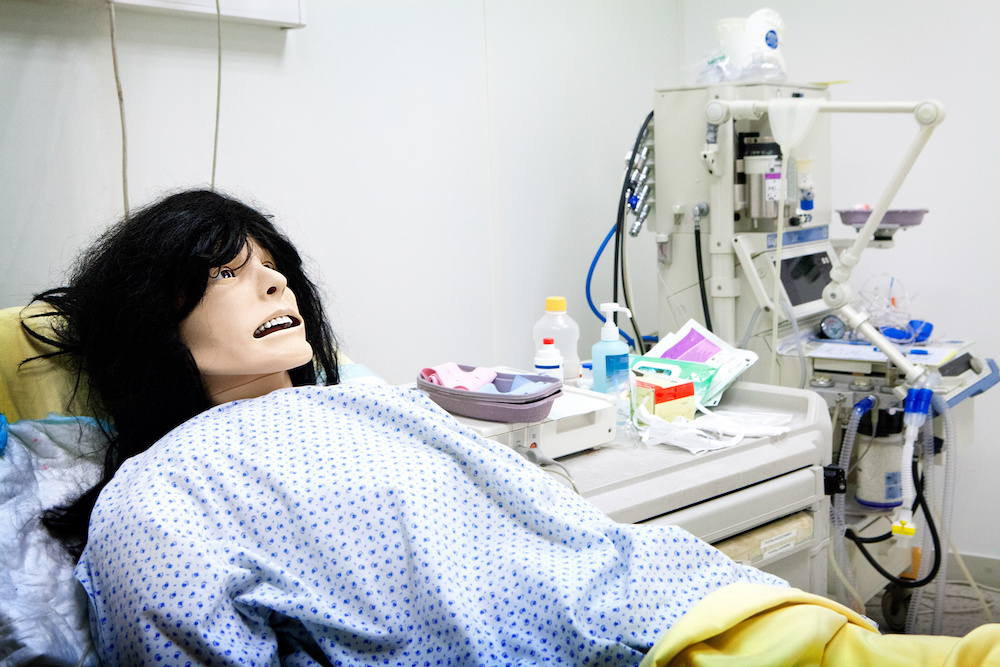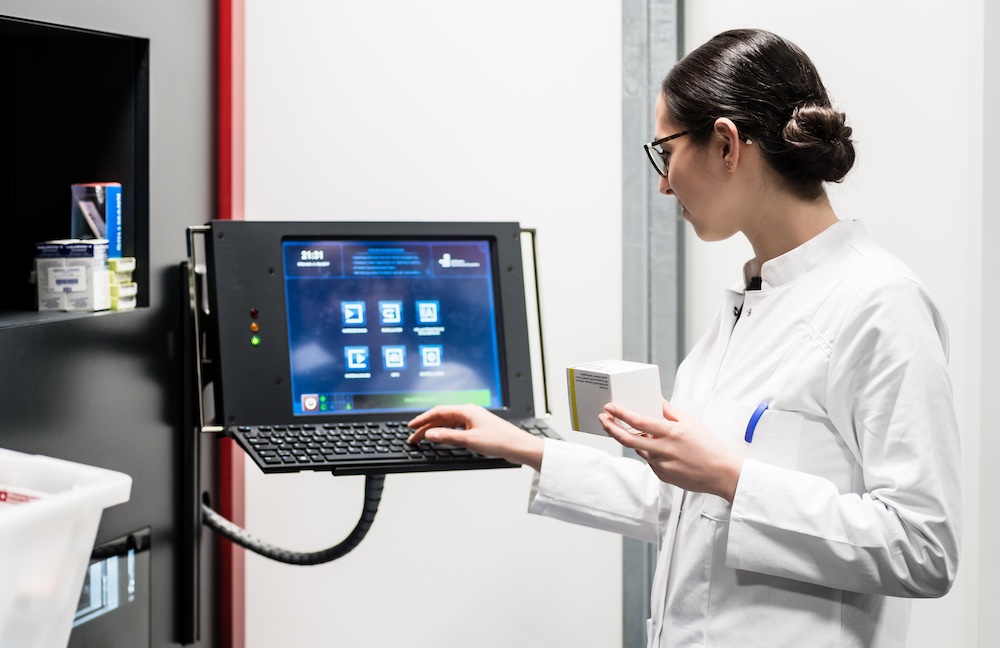Now that Sim Kits are making their way into the hands of healthcare professionals and are becoming the go-to just-in-time training tool, the question becomes, how can healthcare simulation scale Sim Kits to meet a larger organizational need? This HealthySimulation.com article builds upon a previous article, “How Automation is Advancing Quality Healthcare Simulation.” This article also explains how Sim Kits can serve as the foundation of healthcare simulation quality advancement, by scaling just-in-time training.
As a recap, Sim Kits include:
- An easy-to-read instruction, step-by-step document marrying the policy and guidelines.
- A small and portable container housing the necessary healthcare simulation content needed to carry out the procedure.
- A video of a colleague performing this procedure while utilizing the instruction sheet as a script and the contents provided within the kit.
Just as at the beginning of the Sim Kit creation, identifying a solid starting point is important. One great starting point is to identify gaps in care that result in potential patient harm and avoidable costs. Two great examples of this would be Central Line-Associated Bloodstream Infection (CLABSI) and Catheter-Associated Urinary Tract Infection (CAUTI). Both result in negative patient outcomes and increased avoidable costs for the healthcare organization. Meeting with the quality team within the organization might be a great place to begin this discovery phase as this may reveal current gaps in organization-wide processes.
CLABSI Examples
CLABSI consists of all medical skills and the entire medical team related to central venous catheters (CVC). This includes the practitioner that inserts the line, the nurse that changes the caps and dressing, the nursing assistant that is providing personal care, and the medication nurse accessing the line for each medication administration.
Each aspect involves skills/procedures that open the door for the introduction of bacteria into the line. They also offer the ability to practice all types of CVCs, and their skills associated with each, until proficient, which is easily executed with a repository of Sim Kits.
By themselves, Sim Kits offer the ability for healthcare simulation staff to practice when needed. As a collective group within the same context (CLABSI, in this example), this now becomes an organizational-wide initiative to ensure those in charge of carrying out necessary skills are practicing the right way, with the correct equipment and supplies, and are accessible when convenient for them.
This results in self-actualized empowerment through education, which leads to more healthcare professionals taking responsibility for their own educational gaps. Therefore, this results in the scalable, portable, asynchronous quality education medical simulation needs.
Like most successful initiatives, there must be a bit of work completed on the front end. This initiative, Sim Carts, has a much higher rate of success if Sim Kits have been utilized and have become a tool within the organization’s medical simulation offerings. One cannot learn new material until the foundation is understood. The closer the understanding is to a competency level, the greater success in learning the next set of information. This is also true in regard to the expansion of Sim Carts.
Assuming Sim Kits have been utilized to some capacity within the organization, and that there is an ample amount of CVC Sim Kits already made and are ready for use, the healthcare simulation team can begin. They must start by gathering the following:
- A stellar team, because everything in healthcare simulation is better with like-minded, solution-oriented, change agents coming together to provide a service for the greater good.
- A portable, rolling cart that has 3-5 drawers and a large enough top to perform a dressing change on a task trainer (check out the next article on building three types of task trainers based on time, resources, and budget).
- All Sim Kits needed for the agreed upon gap, i.e. CLABSI
- For this example, the focus will be on the nursing faculty and with the assumption that the Quality Department identified CVC Cap Changes as an urgent educational need.
- Think of the necessary supplies needed to build one CVC Dressing Change Sim Kit and multiply by at least five.
- A label maker, or tape, and a colleague that has aesthetically pleasing handwriting.
- A laminator (again, protects the longevity of the document) and velcro, or something similar.
Identified task trainer(s)
Completing the Sim Kit
Once the Sim-Team, is in place, the next step is to rescue and resuscitate a cart grasping onto life as others perceive the value to be of just taking up space in the basement. BioMed, or maintenance, is where most products within the hospital go to spend the remaining days of their lives before moving on in this world. Start here to see if a cart is just waiting on some TLC and can meet this need.
Other potential departments are supply chain and environmental services, as these departments update equipment from time to time and often have older equipment sitting around waiting to be disposed of. Make use of these as recycling decreases costs and adds to the collective healthcare simulation team’s efforts of eco-friendliness.
Next, grab the necessary supplies while keeping in mind that this needs to be easy for the end user (in this case the nurse). So, there need to be extra supplies that are within grasp that can be easily obtained when an item stops working or breaks secondary to overuse, which is actually a good thing in this situation- it’s a metric to showcase staff are practicing.
The cart is now obtained, cleaned, and good to go. Supplies are stacked beside the cart. Time to get creative and have some fun. Load the supplies in the appropriate drawers and label them accordingly (i.e. “Extra CVC Caps”). Continue until all supplies have a home within a drawer and each drawer is labeled. If the cart has a large drawer, a good idea would be to place a few premade Sim Kits in them. This will allow quicker use, as well as multiple nurses practicing at the same time.
Next, print off the associated QR codes for the Sim Kit. There should be one for the instruction sheet and one for the video. Be sure to highlight that below the QR code before printing. Print large enough to laminate and once laminated, attach to the top of the cart via velcro, or some type of adhesive that allows for multiple changes.
Once completed with CVC Cap Change, the healthcare simulation team may want to provide CVC Dressing Change next. They should lamination and velcro create fluidity within this process. Lastly, pick the perfect space-saving task trainer to complement this Sim Kit and place the product in the Sim Kit. If the task trainer fits, place the trainer in one of the cart drawers. The product can also be stored on top of the cart itself, whichever makes more sense for the task at hand.
This Sim Cart is now ready to be assigned to each unit needing CLABSI training and can be carried out by the medical simulation team. The Sim Cart can be an automated, asynchronous learning tool to allow staff scalable just-in-time training at just the right time.








